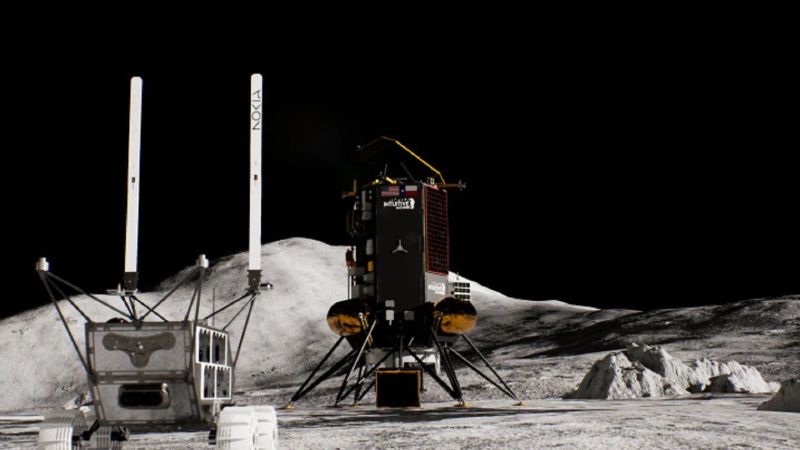NASA and Nokia have partnered to establish a cellular network on the Moon, with the goal of aiding long-term human presence on other planets. A 4G network unit, built by Nokia’s Bell Labs, will be sent to the Moon via a SpaceX rocket and installed at the Moon’s south pole. The network will connect the lander to two roaming vehicles tasked with searching for ice on the Moon, transmitting images back to Earth in near real-time. This project will help lay the foundation for future space missions, such as using lunar ice for creating breathable oxygen and fuel for Mars missions.
The Lunar Outpost rover and Micro-Nova hopper will explore areas on the Moon to gather crucial information. This project is part of NASA’s Artemis program, which aims to return astronauts to the Moon this decade. The ability to communicate via a cellular network on the Moon is considered essential for supporting future missions, as well as enabling high-resolution video and science data transmission. The goal is to establish a lunar communications network that would allow explorers to beam scientific data back, communicate with mission control, and even connect with their families as if they were on Earth.
Bell Labs was selected as part of NASA’s Tipping Point initiative, which supports the development of technologies for future missions while positioning companies for roles in the space economy. Nokia was granted $14.1 million for this project and has also been selected by DARPA to work on a communications services infrastructure for the lunar economy. The future lunar economy will require advanced communication technologies for data collection, information sharing, and maintaining operations, especially for sustaining a human presence on the Moon and automating operations such as resource mining.
The benefits of establishing a cellular network on the Moon extend beyond space exploration. If the network can withstand the challenges of space, it could be adapted for use in harsh environments on Earth, such as polar ice caps or offshore platforms. Compact and low-footprint network equipment that can be easily transported and deployed will be valuable for applications like industrial sites, public safety, emergency response, disaster recovery, and defense. This technology could have implications for various Earth-based ventures and help address communication challenges in remote or challenging environments.
NASA has a history of developing technologies for space exploration that have had significant impacts on Earth. Innovations such as the ear thermometer, cochlear implants, freeze-dried food, memory foam, and CT scans originated from NASA research and have found applications in various industries. NASA’s research in areas like plant growth, water purification, and computer technology has led to advancements in agriculture, healthcare, and consumer products. The collaboration between NASA and Nokia to establish a cellular network on the Moon is just one example of how space-age technology can benefit both space exploration and life on Earth.
Overall, the partnership between NASA and Nokia to set up a cellular network on the Moon represents a significant step towards enabling long-term human presence on other planets. By establishing communication infrastructure on the Moon, future missions can be supported, and valuable data can be transmitted back to Earth. This project also has the potential to benefit Earthly applications, such as improving communication in challenging environments and advancing technology for industrial, public safety, and defense purposes. The legacy of space-age technology from NASA continues to inspire innovation and drive progress in various fields, showcasing the far-reaching impact of space exploration efforts.


